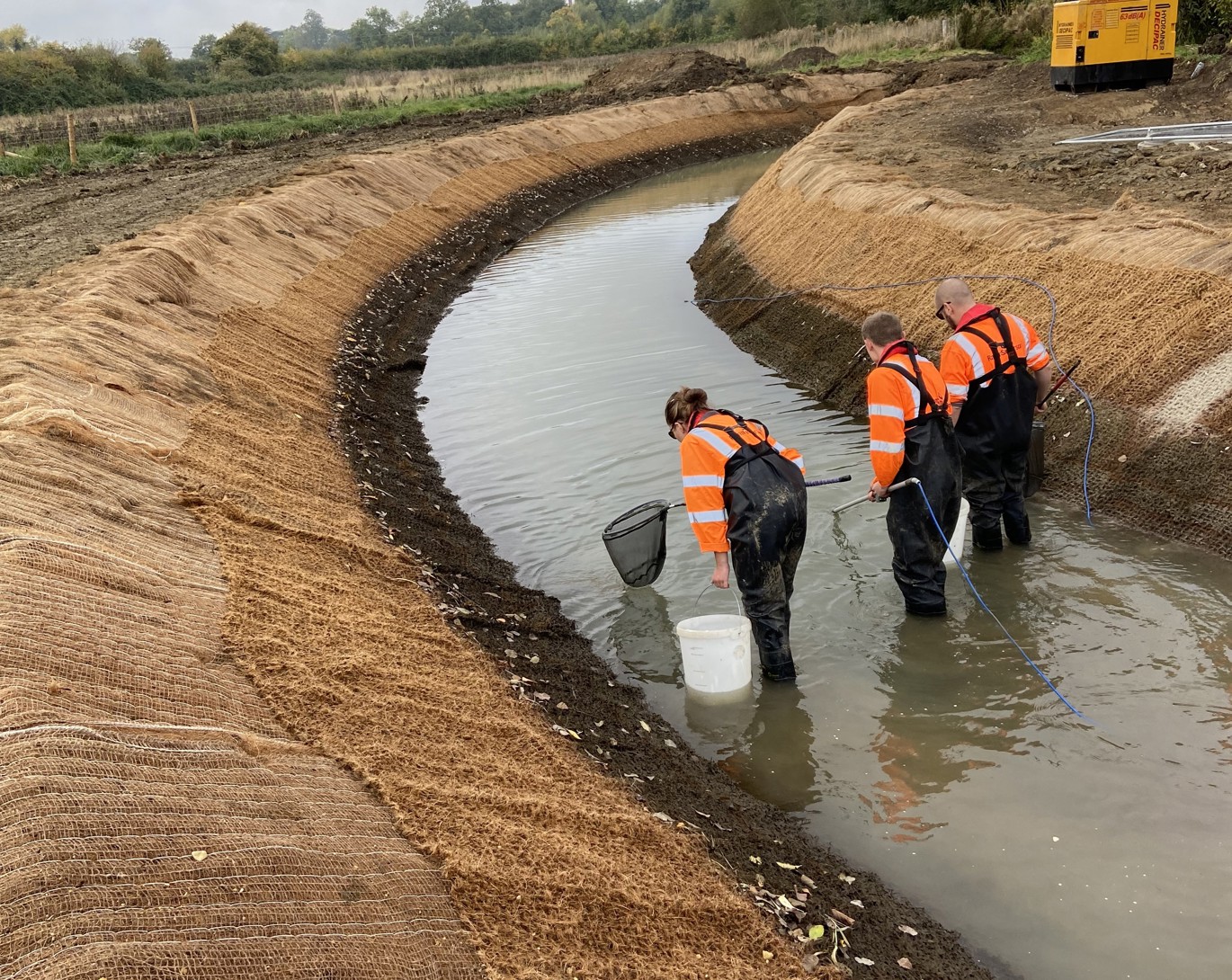
Project Outline
RammSanderson was commissioned by Galiford Try Construction Limited to carry out fish rescue surveys on the River Frome in Stroud. The works were associated with the larger Severn Trent Water (STW) Stroud Sewerage Strategy project, to which we provided a suite of protected species surveys involving badger, otter, water vole and white-clawed crayfish
Two sections of the river Frome needed to be crossed by STW to allow the construction of an underground pipe, which was to be dug under the riverbed once it had been drained. As such, the key objective of the Ecological Assessment was to rescue as many fish as possible from two sites, which were set to be closed via porta dam and drained. If these sites were drained without removing fish species first, this could have a potential significant impact upon present fish populations, of which, some species are protected by law.
RammSanderson Approach
The Survey
The Frome is a flashy river, attributed to its head waters separated across five valleys. As such, the fast-flowing, hydrologically active catchment, combined with the location’s proximity to the Severn Estuary, creates suitable habitat for migratory species such as Brown Trout Salmo trutta and Eel Anguilla anguilla, which are both protected - it was important to rescue as many individuals as possible prior to the draining of the channel at two designated locations. Each channel was dammed, with a temporary side channel constructed to divert the water around - RammSanderson performed four fish rescue surveys, one on each main channel, and one on each temporary channel.
Our Electrafish EFB2 electrofishing unit was used along one anode and cathode; this works by sending between 50-100 electric pulses per second into the water at a pre-defined voltage, usually between 50-80v. The fish move towards the anode through a process known as “forced swimming” before they are momentarily stunned. At this point, they are netted and counted, with each individual being measured before being moved into a recovery tank and then into the river downstream of the works. Indices such as electrical conductivity and dissolved oxygen are taken at regular intervals to ensure work is successful without causing unnecessary harm to the fish.
Following four rounds of electrofishing, each lasting for multiple days, a total of 1,552 fish were rescued, including 127 Brown Trout, 493 Lamprey (mainly brook), 5 eels and 715 bullheads. Other species caught included stickleback and roach. Each reach was no longer than 30-40m, indicating the sheer volume of aquatic life present in our waterways. Our work enabled the scheme to be carried out with little impact to the aquatic life present with the Frome.
Electrofishing is a common tool in the consultancy trade to move a large number of fish quickly. This has been used in scenarios such as;
- Fish Rescue: As mentioned above, fish are moved out of a body of water and relocated back into that same body of water. This is often to enable construction work taking place within or on the banks of the channel.
- Fish Translocation: Moving fish between bodies of water, for example constructed ponds on building sites.
- Fish Depletion Surveys: Sometimes, knowing what fish are present in a stretch of water can inform developers of the feasibility of certain schemes, for example, the presence of protected species. Nets are placed across the width of a river, and fish are caught and moved from within the net to provide information on the abundance and diversity of fish present.
RammSanderson has a team of experienced consultants ready to carry out Fish Survey and Rescue Survey Services. Visit our Fish Aquatic Ecology page to learn more!